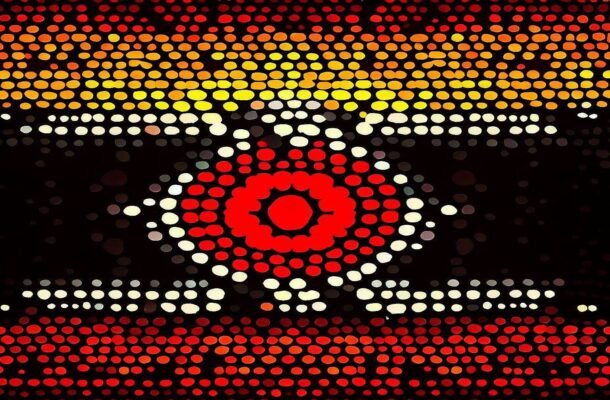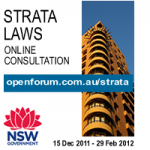Defining indigeneity

The courts have over the last two years changed how Indigeneity is defined in Australian law in a way which, while subtle, has a significant negative impact for many Aboriginal and Torres Strait Islander people.
The long-standing test for Indigeneity was established in the Mabo case by Justice Brennan who said:
“Membership of the indigenous people depends on biological descent from the indigenous people and on mutual recognition of a particular person’s membership by that person and by the elders or other persons enjoying traditional authority among those people.”
The three-part test was applied over subsequent decades in deciding native title claims and for other legal purposes where Indigeneity was relevant.
The negative change in how Indigeneity was defined arose, paradoxically, from a case which, in other respects, had a positive effect on the rights of Indigenous Australians. In the Love and Thoms case, litigants born outside Australia but who were not Australian citizens, argued that the Commonwealth’s power to detain and deport non-citizens under the Migration Act 1958 (Cth) did not apply to them. This is because the Act depends on the power in the Constitution to legislate with respect to ‘aliens’ and, argued Love and Thoms, they could not be considered aliens as they were Indigenous Australians.
A majority of the High Court upheld this argument. Justice Edelman, citing an early colonial case stated, Aboriginal people could not be ‘considered as Foreign in a Kingdom which is their own.’ The effect of the decision is that Indigenous Australians cannot be deported even if they are not Australian citizens.
All majority justices applied the Mabo test of Indigeneity. However Justice Gordon stated that the first limb of the test was
“Membership of [an] indigenous people depends on biological descent…”
The crucial point to note here is Justice Gordon’s substitution (brackets in his judgment) of the word ‘an’ for the word ‘the,’ as used by Justice Brennan. The change to this single word fundamentally altered the law, because instead of a claimant being able to satisfy the first element of the test by proving descent from Indigenous people generally without specifying any particular community to which their ancestor belonged (a fact which they would unaware of if they were relying solely on genetic testing), the new formulation requires that descent be proved with reference to the same Indigenous community as that with which they identify with and by which they have been accepted.
It could be argued that because Justice Gordon provided no rationale for the re-formulation and it is not reflected in the judgments of any other of the majority justices, it did not create a binding precedent. However the test was nevertheless applied by the Federal court in two subsequent cases (Webster and Helmbright (No 2)) and is now used by the Commonwealth government in determining claims of Indigeneity.
The problem with the new approach is that it is at odds with the science of genetics and establishes a test which in many cases will be impossible to satisfy.
Genetics and Genealogy
There are two avenues by which, under the old approach, a person could prove Indigeneity – genetics or genealogy.
DNA testing was useful, but only to a point. DNA testing can identify whether a person is descended from an Indigenous person via their direct maternal or paternal line (that is from their father, grandfather, great grandfather et cetera and similarly via their mother). However it cannot determine whether a person has any other Indigenous ancestors. Furthermore, even where a person can prove Indigenous ancestry in the direct line, a genetic test cannot possibly identify the particular Indigenous nation to which the ancestor belonged.
Whereas under the original test a person could satisfy descent either by means of biological testing (sufficient to prove Indigeneity in cases where the person had an Indigenous ancestor in the direct maternal or paternal line) or by genealogical evidence (from birth or other family records), what the new approach has done is to eliminate genetic testing as a means of proving Indigeneity, leaving genealogy demonstrating descent from a specific Indigenous person whose community can be identified as the only avenue by which the first limb of the test can be satisfied.
If a claimant cannot do this, for example, because birth records are lacking, they will fail to fulfil the first limb, even if they are biologically Indigenous. Alarmingly, this will be the case for many members of the Stolen Generation who have no means of identifying an ancestor.
A further flaw in the new approach is that even where a person has been able to prove descent from a person who is identifiable as a member of a particular community, their claim will fail if they happen to identify with, and be accepted by, a different Indigenous community. There could be any number of circumstances in which that could arise – for example where the community from which a person has descended no longer has any surviving members or where the person has never had contact with the community from which their ancestor came.
Indigeneity as a Concept
Even leaving aside the new interpretation, it is questionable whether the three-part test adequately covers the concept of Indigeneity. The essential problem is that by requiring claimants who identify as Indigenous to prove both descent (even descent as originally defined before the Love decision) and acceptance, it excludes many people who can legitimately claim Indigenous status.
The requirement to prove descent denies status to people who, while not of Indigenous descent, have become members of an Indigenous community by adoption or marriage.
The requirement to prove acceptance by an Indigenous community can itself be problematic, in that claimants who can prove descent may nevertheless be unable to identify a community to which they can apply for acceptance, an obvious example of this being members of the Stolen Generation.
In light of the above, it is useful to consider whether the three-part test needs to be reformulated so as to define as Indigenous a person who
(i) identifies as Indigenous and who is of Indigenous descent, by means either of genetic or genealogical evidence, or
(ii) who identifies as Indigenous and who is accepted as such by an Indigenous community
This formulation respects individual choice by making self-identification the common necessary element of both of its limbs. It would also enable a person who identifies as Indigenous and who can prove that they are of Indigenous descent (either by genetics or genealogy) but who is unable to prove a link to, and thus receive recognition from, an Indigenous community, to nevertheless be considered Indigenous.
Conversely, it enables a person who identifies as Indigenous and who has been accepted as such by a community (for example through adoption or marriage) to be considered as Indigenous even though they are not of Indigenous descent. The definition also ensures the legitimacy of claims to Indigeneity, which is of key importance to Indigenous peoples seeking to preserve their identity, in that something more than self-identification is required.
Given the heightened attention that will no doubt be focussed on Indigeneity in the run-up to the Voice referendum the adoption of a more inclusive test is worthy of consideration.
Dr Bede Harris began his academic career at the University of Natal, Pietermaritzburg. He is now a Senior Lecturer and Law Discipline Head at the School of Business in the Faculty of Business, Justice and Behavioural Sciences at Charles Sturt University where his research focuses on Constitutional Law and Indigenous legal issues.












